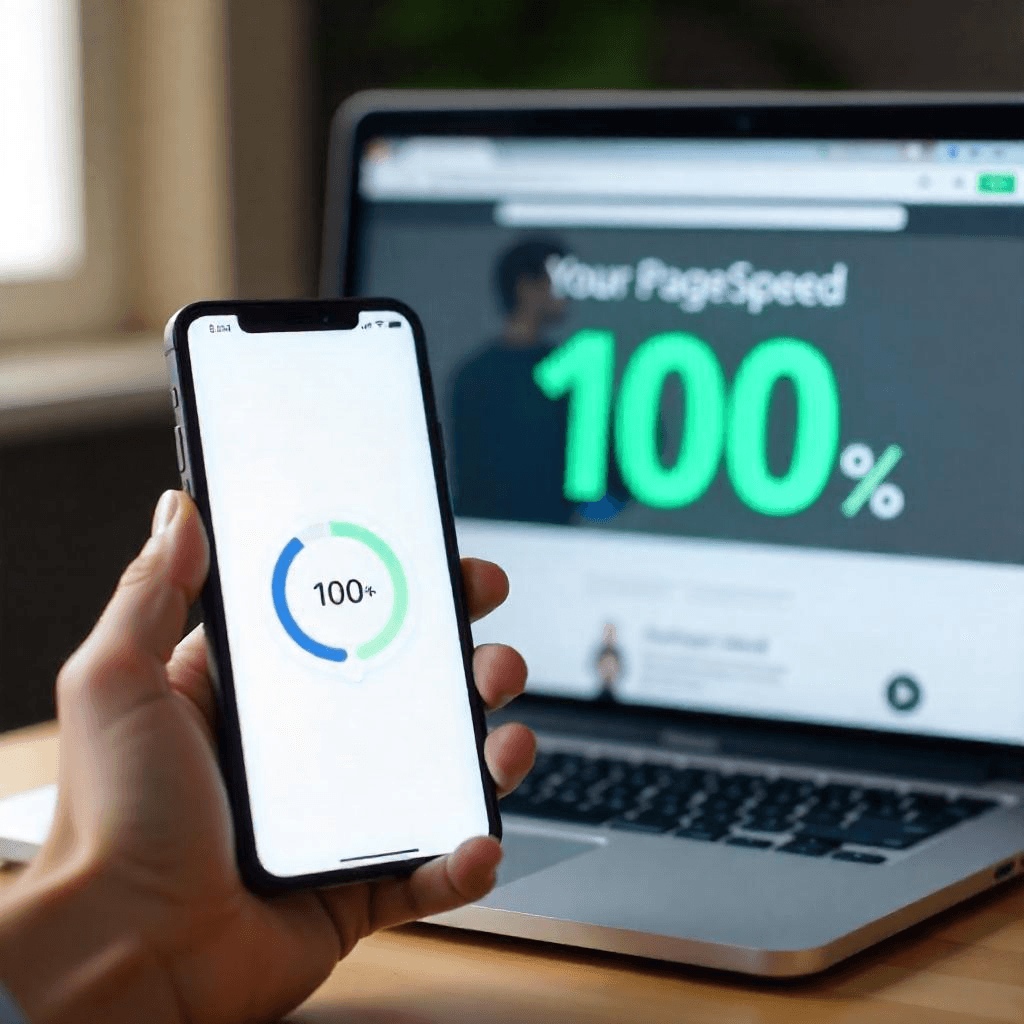Google PageSpeed Optimization: The Ultimate Guide to Faster Websites
Introduction
In today’s digital landscape, website speed is crucial in user experience, search engine rankings, and conversions. A slow-loading website can drive visitors away, increase bounce rates, and negatively impact SEO. Google PageSpeed Optimization ensures your website performs efficiently and delivers a seamless experience.
Google PageSpeed Insights is a powerful tool that analyzes web page speed, provides a performance score, and offers actionable recommendations to enhance loading times. This guide covers everything you need to know about optimizing Google PageSpeed scores, from image compression to server improvements, to help your site rank higher and perform better.
What Is Google PageSpeed Insights?
Google PageSpeed Insights (PSI) is a free tool that measures the performance of web pages for both desktop and mobile devices. It assigns a score between 0 and 100, with higher scores indicating better performance. PSI provides detailed diagnostics and suggestions to improve loading speed and user experience.
Key Metrics in Google PageSpeed Insights:
- First Contentful Paint (FCP): Measures how quickly the first piece of content appears on the screen.
- Largest Contentful Paint (LCP): Evaluates when the main content has fully loaded.
- Cumulative Layout Shift (CLS): Determines visual stability by tracking unexpected layout shifts.
- Time to Interactive (TTI): Assesses when a page becomes fully interactive.
- Total Blocking Time (TBT): Measures the time a page remains unresponsive to user interactions.
Why Website Speed Matters
1. SEO Benefits
Google considers page speed as a ranking factor. Faster websites tend to rank higher in search results, leading to better visibility and increased organic traffic.
2. Improved User Experience
A fast website enhances user satisfaction, reduces bounce rates, and increases engagement. Visitors expect web pages to load within 3 seconds, and anything beyond that may result in lost users.
3. Higher Conversion Rates
For eCommerce websites, speed directly impacts revenue. Studies show that a 1-second delay in page load time can reduce conversions by 7%. Faster checkout pages lead to better sales performance.
How to Improve Google PageSpeed Score
1. Optimize Images for Faster Loading
Images contribute significantly to page size. Optimizing them can drastically improve load times.
Best Practices for Image Optimization:
- Use compressed image formats like WebP instead of JPEG or PNG.
- Resize images to match the required display dimensions.
- Enable lazy loading to defer off-screen image loading.
- Use content delivery networks (CDNs) to serve images efficiently.
📌 Tool Suggestion: Use TinyPNG or Squoosh for compressing images without losing quality.
2. Minify and Combine CSS & JavaScript
Excessive CSS and JavaScript files increase load times. Minification removes unnecessary characters from code, reducing file sizes.
Optimization Tips:
- Use tools like UglifyJS for JavaScript and CSSNano for CSS minification.
- Combine multiple CSS and JS files into a single file to reduce HTTP requests.
- Load JavaScript files asynchronously to prevent render-blocking.
📌 Tool Suggestion: Implement Google Lighthouse to analyze and fix JavaScript and CSS issues.
3. Enable Browser Caching
Caching stores frequently accessed resources in the user’s browser, reducing page load times for returning visitors.
How to Enable Caching:
- Set cache expiration headers for static assets like images, CSS, and JS.
- Use plugins like W3 Total Cache (for WordPress) to automate caching.
- Configure your
.htaccessfile for better browser caching settings.
4. Use a Content Delivery Network (CDN)
A CDN distributes website content across multiple servers worldwide, ensuring users load data from the nearest server location.
CDN Benefits:
- Reduces server response time.
- Improves page load speed, especially for international visitors.
- Enhances security by protecting against DDoS attacks.
📌 Recommended CDNs: Cloudflare, Amazon CloudFront
5. Reduce Server Response Time
A slow server response can delay page loading, affecting your PageSpeed score.
Optimization Techniques:
- Upgrade to a faster web hosting plan.
- Optimize databases by removing unnecessary data.
- Enable GZIP compression to reduce the size of transferred files.
- Use HTTP/2 for better efficiency in loading resources.
📌 Tool Suggestion: Test server speed using GTmetrix.
6. Eliminate Render-Blocking Resources
Render-blocking JavaScript and CSS delay content display. To improve performance:
- Move JavaScript to the bottom of the page or use async/defer attributes.
- Inline critical CSS to render above-the-fold content faster.
- Use Google PageSpeed Insights to identify and fix render-blocking issues.
7. Optimize Web Fonts
Custom fonts can slow down page speed. Optimize by:
- Using system fonts when possible.
- Preloading fonts to avoid layout shifts.
- Limiting the number of font variants loaded.
📌 Tool Suggestion: Use Google Fonts Display Swap to load fonts efficiently.
8. Reduce Redirects and HTTP Requests
Excessive redirects and HTTP requests slow down page speed. Minimize them by:
- Fixing broken links and unnecessary redirects.
- Using CSS sprites to combine multiple images into one.
- Loading only essential resources.
9. Implement Lazy Loading for Videos & Images
Lazy loading defers the loading of offscreen content until the user scrolls down.
How to Enable Lazy Loading:
- Use
loading="lazy"attribute for images in HTML. - Implement Lazy Load plugins for WordPress.
10. Regularly Monitor Performance
Optimization is an ongoing process. Regularly monitor speed and make adjustments based on new recommendations.
📌 Useful Monitoring Tools:
Conclusion
Google PageSpeed Optimization is crucial for improving user experience, search engine rankings, and website conversions. By implementing image optimization, code minification, caching, CDNs, and server enhancements, you can significantly boost your website’s performance.
Start optimizing today and enjoy faster loading times, better SEO rankings, and higher user engagement!
FAQs
1. What is a good PageSpeed Insights score?
A score of 90 and above is considered excellent. Aim for a mobile score above 80 and a desktop score above 90 for optimal performance.
2. How often should I check my PageSpeed score?
It’s best to check your PageSpeed score monthly or whenever you make major website updates.
3. Does a fast website improve SEO rankings?
Yes! Google prioritizes fast-loading websites, making speed a crucial SEO factor.
4. What’s the best tool for website speed optimization?
Google PageSpeed Insights, GTmetrix, and Pingdom are highly recommended.
By following these optimization techniques, your website will load faster, rank higher, and provide a better experience for users. 🚀






